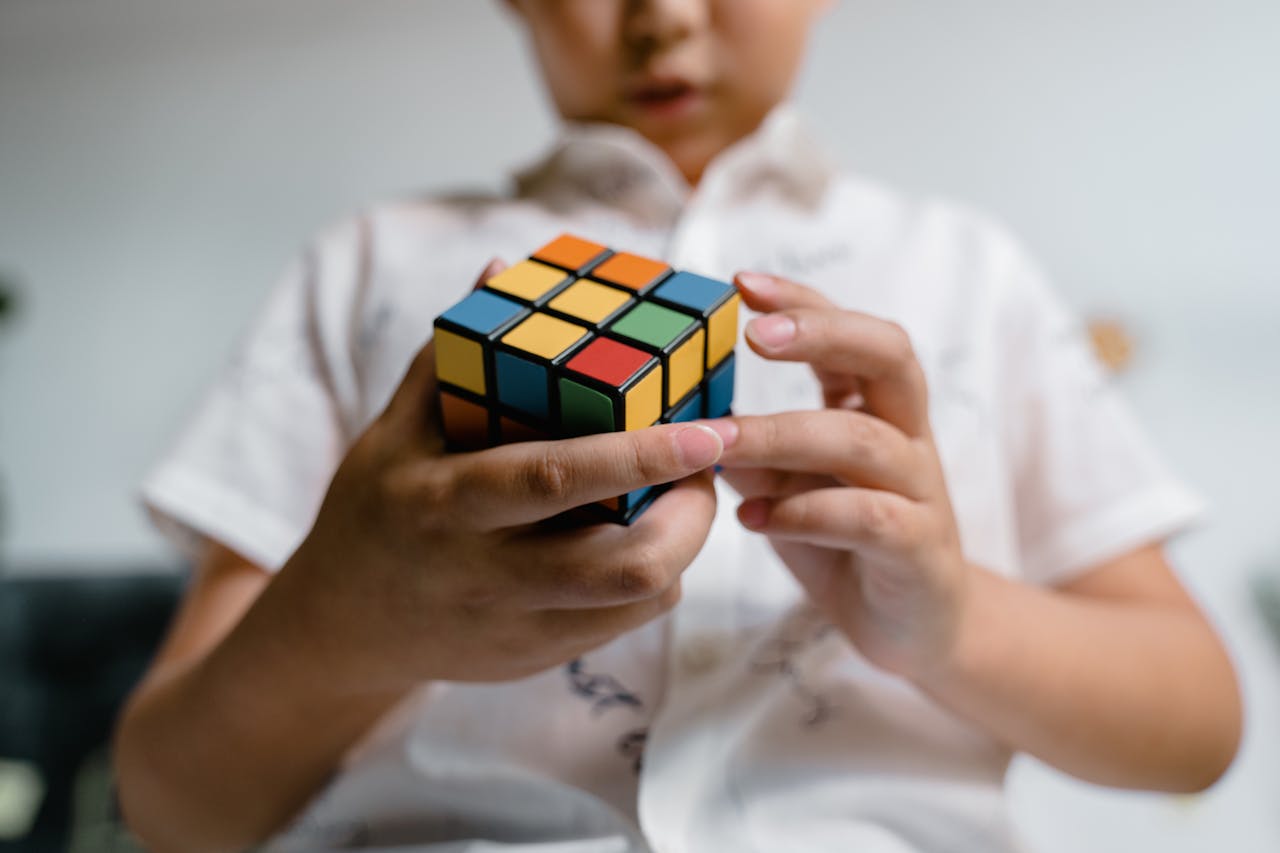Messy creativity in childhood is essential for nurturing wonder and discovery. Chasing wonder through art allows children to explore possibilities, build resilience, and develop both scientific and artistic thinking.

Why Messy Creativity in Childhood Matters
I came across a YouTube clip that got me thinking and re thinking about “wonder”. In the video “Amazing Rubik’s Cube in a Bottle Magic Trick that Will Blow Your Mind!” the magician storyteller Taylor Hughes shows his audience a solved Rubik’s Cube sealed inside a glass jar. He uses this impossible looking illusion as a metaphor for possibility itself. The heart of his message: technique is merely a vehicle; but wonder is the destination.
Tyson, an American astrophysicist, reminds us that science seeks answers already woven into the fabric of the universe, while art invites us to create new possibilities by stitching our own bright threads into the tapestry. In a similar spirit, Hughes’ bottled cube dramatizes the idea. The scientific mind asks what is possible within the laws of nature; the artistic mind dares to imagine what could be and bring it to life.
The distinction matters because the habits that drive both scientific and artistic breakthroughs begin with the same spark: wonder.
The Current State of Education
So where is this going?
We know science and creativity are interconnected. Yet, too often, education systems treat them as opposites, and science would often be placed on a pedestal. Consider how educational policies often prioritize science, technology, engineering and mathematics (STEM) fields, intending to boost economic resilience. Although understandable, it also reflects a hierarchy where measurable, profit driven disciplines are valued above creativity, the very essence of human spirit that fuels every true discovery.
A Rubik’s Cube of Possibility
Imagine handing a child a Rubik’s Cube and asking, “How many ways can we mess up the cube?” Mathematicians have calculated more than forty three quintillion combinations! Yet the real magic appears in the child’s widening eyes with flash of uncertainty, asking “What will happen if I twist it this way?”. This is pure wonder in action.
Adults, however, often rush to restore order. We would preserve a perfect, finished product in a glass jar rather than dismantling it and playing with possibilities. In classrooms and living rooms alike, we encourage children to protect the one “correct” result instead of exploring possibilities and asking questions. Unfortunately, we are guarding perfection at the expense of curiosity because we are too afraid to mess things up.
The Perils of the Glass Jar
When we cling to flawless outcomes, whether it is neatly written work with every letter sitting precisely on the ruled line or every crayon stroke staying inside the template, we inadvertently teach children that failures are unacceptable, mistakes are enemies, and imperfections are not welcomed.
Eventually, they stop asking “What if…?” because the answer might reveal a crack. Creativity withers under such rigid conditions. After all, creativity delights in crossing lines, just like how batik dyes have a habit of seeping beyond their neat wax outlines, birthing new motifs.
Worse still, fear of failure can shrink a child’s sense of agency. Rather than adapting to change, they learn to avoid responsibility: the floor hurt me, the lousy brush ruined my painting, the teacher doesn’t know how to teach. We strip them of the most powerful tool an artist or scientist possesses, that is, the ownership of the process. A child who believes mistakes are someone else’s fault never practices the vital skill of revision.
Art as a Playground for Risk and Messy Creativity in Childhood
When children boldly overmix colours and accidentally invent an unnamable shade of blue violet or yellow green, they have conducted a miniature experiment in colour theory. They learn, through their senses, that every action produces a reaction, and some reactions are unexpectedly beautiful.
Such discoveries are not random. Psychologists studying creativity note that divergent thinking flourishes in tolerant environments where exploration is welcomed, and adults model flexibility. What started out as a “failed” cardboard castle in the morning in an early childhood classroom can be dismantled and reborn as a robot shell, or even a hornbill beak and wings after lunch, reminding children that beginnings are more valuable than endings.
A well known psychologist Mihaly Csikszentmihalyi adds that such a creative process often induces “flow”, a state of deep, effortless focus that boosts happiness and fulfilment when individuals are fully engaged in challenging, meaningful activity. In other words, when we give children permission to tinker, we cultivate both creative minds and joyful, resilient hearts.
From Mess to Mastery: The Spiral of Learning
Creativity rarely develops in a linear, predictable way. It is a process of revisiting and refining, where children bounce between confidence and uncertainty. There is no perfection on the first try; rather, it relies on feedback to progress.
Adults, therefore, must shift the spotlight from praising finished products, to asking specific, curiosity driven questions about the process, like “Show me how you create those colourful, squiggly lines.” Inviting the young creators to reflect and transform mess into mastery.
Over time, a child who is comfortable with creative risk also gains transferable habits for scientific inquiry: hypothesizing, testing, revising, and persevering. Art and science, therefore, are not opposites but dance partners, with their steps kept perfectly in the same rhythm by wonder.
Chasing Wonder Through Art
Ultimately, chasing wonders through art is less about producing gallery-worthy masterpieces and more about protecting the instinct to explore possibilities beyond the given.
The opinions expressed in this article are the author’s own and do not reflect the view of Swinburne University of Technology Sarawak Campus. Ting Mee Ling is a lecturer in early childhood education and Eunice Law Mei Yuan is the Digital Learning Technologist and design lecturer at the Faculty of Business, Design and Art. They are contactable at [email protected] and [email protected]

